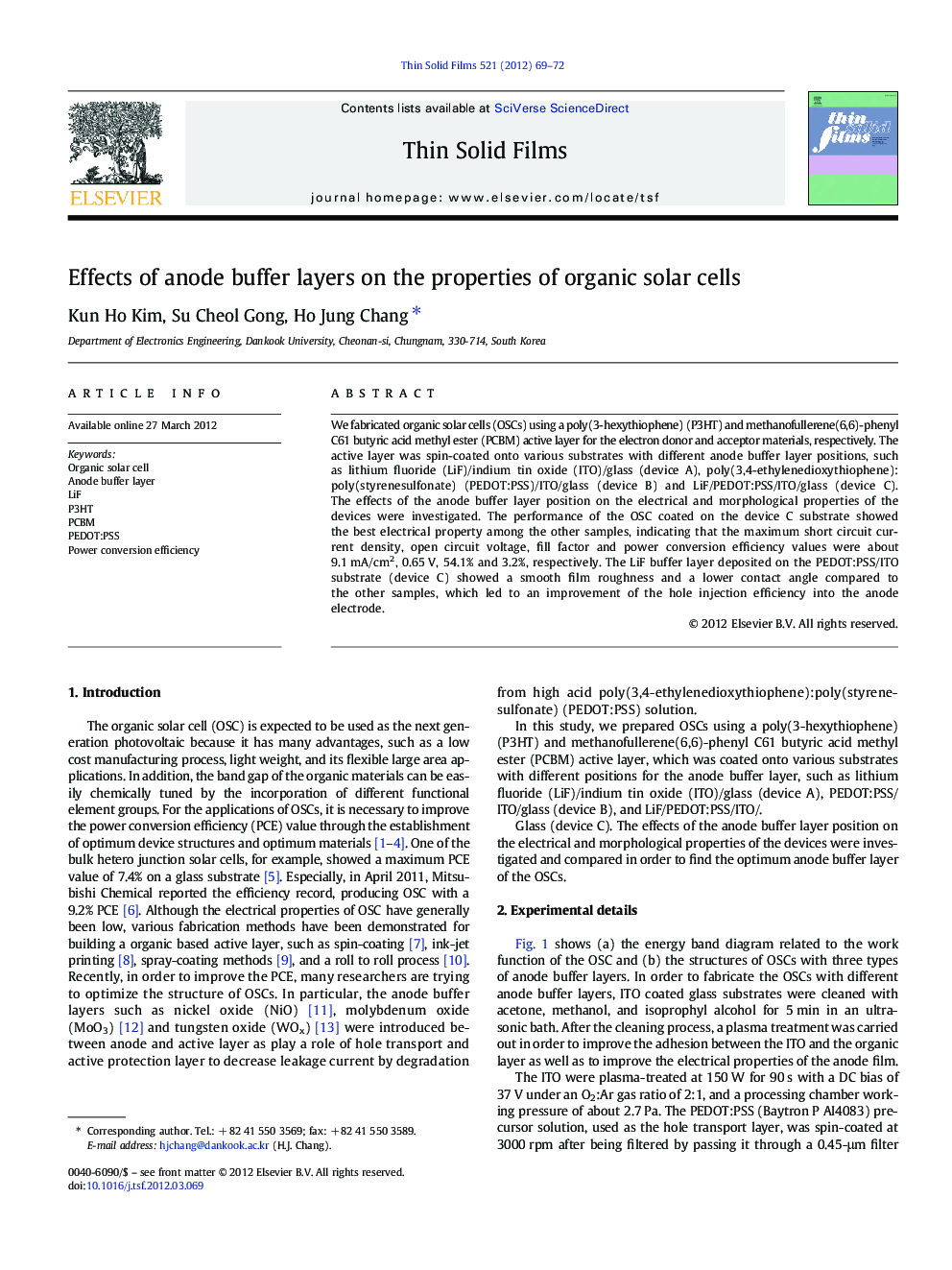| Article ID | Journal | Published Year | Pages | File Type |
|---|---|---|---|---|
| 1666928 | Thin Solid Films | 2012 | 4 Pages |
We fabricated organic solar cells (OSCs) using a poly(3-hexythiophene) (P3HT) and methanofullerene(6,6)-phenyl C61 butyric acid methyl ester (PCBM) active layer for the electron donor and acceptor materials, respectively. The active layer was spin-coated onto various substrates with different anode buffer layer positions, such as lithium fluoride (LiF)/indium tin oxide (ITO)/glass (device A), poly(3,4-ethylenedioxythiophene):poly(styrenesulfonate) (PEDOT:PSS)/ITO/glass (device B) and LiF/PEDOT:PSS/ITO/glass (device C). The effects of the anode buffer layer position on the electrical and morphological properties of the devices were investigated. The performance of the OSC coated on the device C substrate showed the best electrical property among the other samples, indicating that the maximum short circuit current density, open circuit voltage, fill factor and power conversion efficiency values were about 9.1 mA/cm2, 0.65 V, 54.1% and 3.2%, respectively. The LiF buffer layer deposited on the PEDOT:PSS/ITO substrate (device C) showed a smooth film roughness and a lower contact angle compared to the other samples, which led to an improvement of the hole injection efficiency into the anode electrode.
